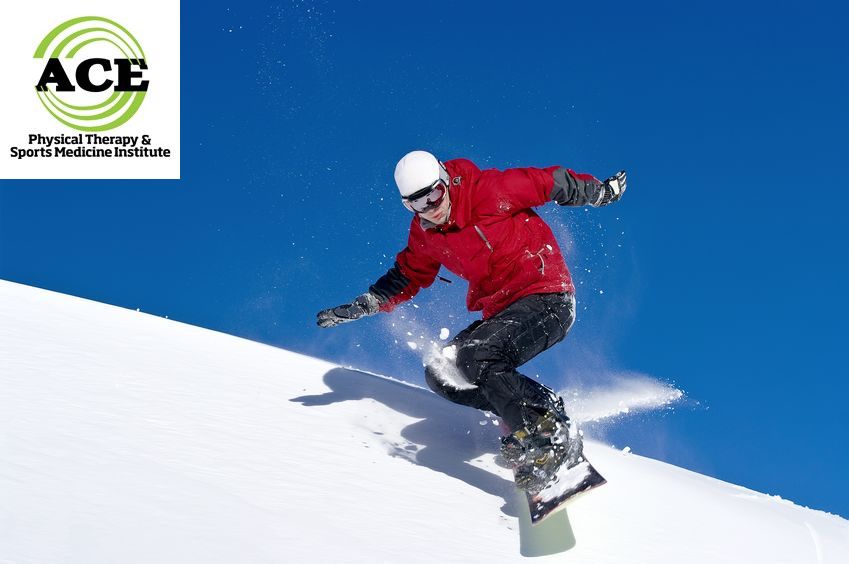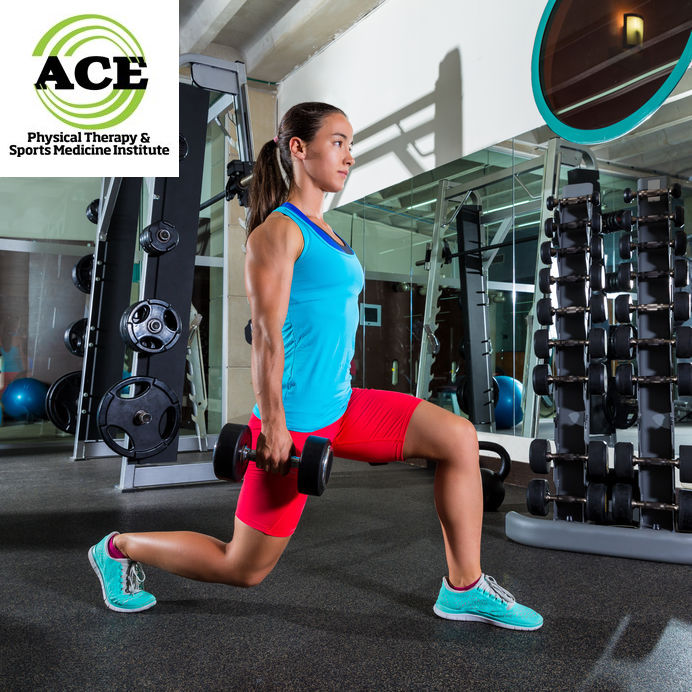GETTING READY TO SKI AND SNOWBOARD

Tid Bits of Info
- Snowboarding was invented in the 1960s.
- Snowboarding makes up approximately 30% of the revenue at local ski resorts.
- Skiing injuries outnumber snowboarding injuries every year. More than 7000 head injuries and death could be avoided if everyone wore a helmet.
- More than 70% of all snowboarders are under the age of 25.
- Seek the advice of a Physical Therapist or personal trainer for a sound conditioning program.
Families and friends will soon be hitting the slopes in record numbers. Many have already set aside time in their schedule and made reservations. Unfortunately, not as many have been physically getting ready to ski and snowboard. It is vital to prepare the body for the rigors of skiing or snowboarding for an entire day not to mention several days in a row. Lack of physical training can increase the risk of injury that may sideline athletes for weeks and even months.
While the sports are completely different, getting ready to ski and snowboard focus on similar preparation steps. When developing a training regimen for the upcoming season, plan on starting the program at least 6 weeks prior to departure. It would be ideal to have 8-10 weeks to better prepare the musculoskeletal system for the rigors of skiing or snowboarding down a bumpy slope at a high speed. In most cases, their cardiovascular system can be prepared in 4-6 weeks with proper training activities, but the muscles and joints need more time.
There are four major areas that should be conditioned when preparing for the slopes: cardiovascular fitness, muscle strength, agility and balance and flexibility. Seeking the advice and treatment from a Physical Therapist or certified personal trainer can save you time and energy. Most importantly these healthcare professionals can streamline your program and make sure that you are performing the proper exercises that will enhance the four areas that need to be addressed with the most efficiency and productivity.
CARDIOVASCULAR FITNESS
Skiing and snowboarding are high energy sports that are demanding on every part of your body. The ability for the heart to pump richly oxygenated blood throughout the body to supply the necessary oxygen and “fuel” to the working body parts can be enhanced with proper training. Your heart is a muscle and when it is trained properly it can be very efficient. It has to be trained the way that it will be used on the slopes. When getting ready to ski and snowboard for a full day, the heart must be prepared to sustain short bursts of activity and sustain that effort over the whole day. Training should include periods of raising your heart rate to near maximum for short periods of time as well as sustaining a moderate heart rate elevation for prolonged periods of time. Skiing or snowboarding down some mountains can take more than 30 minutes therefore you have to prepare your body/heart for it.
MUSCULAR STRENGTH
Developing muscular strength takes time! The beginning part of any program will enhance the communication between the nerves (they “tell” the muscle what to do and when to do it) and muscles but there will be no significant strength gains in the first 3-4 weeks. The strength gains (biochemistry changes in the muscles) will take place beginning in the next 4-8 weeks.

When strength training for your trip, be sure to strengthen your whole body. Your neck and shoulders need to be prepared for the speed down the hill while hitting bumps along the way. Your core is one of the most important areas to spend time developing muscular strength. The core (most healthcare professionals consider any muscle from your chest to your knees as the core) is the foundation of the body. With poor core strength or control the probability of sustaining an injury increases drastically. Obviously, your lower extremities can take a beating while on the slopes. You should develop strength from your buttocks to your toes and you will be better prepared for the grueling slightly squatted posture that has to be sustained to deal with the forces that develop when you ski or snowboard over a rough ski slope or trail.
AGILITY AND BALANCE
Agility and balance not usually the main focus of a training program, but drills to enhance these skills can help you keep your balance and prevent falling. A large part of developing better agility skills or balance is dependent on muscular strength. Secondly, there should be time spent exercising on unstable surfaces and performing drills that require sudden changes in direction. Increasing the ability to accelerate and decelerate under control will enhance your chances of staying erect and not falling when you are coming down the hill.
FLEXIBILITY
All soft tissues of the body can be stretched and strengthened to develop better flexibility. When a body part is constantly placed in a shortened position, the soft tissues will become “tight.” When a body part is constantly placed on a stretch the soft tissues are very “taut.” If these areas are treated properly, the “tight” area will be stretched and strengthened and the “taut” area will be primarily strengthened. The goal should be to have all areas “well-toned” which is not too tight or taut.
Proper preparation for any sporting event is required if you want to have the very best experience. Skiing and snowboarding are no different and the probability of sustaining an injury during the time on the slopes raises drastically if you are ill-prepared. Seek the advice of a Physical Therapist or personal trainer for a program that will properly prepare you for the upcoming season.
























